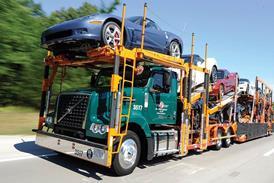
California is to extend the reach of its 24-nautical mile clean-fuel shipping zone to include offshore islands following complaints from the US Navy that more than half the cargo vessels serving the ports of Los Angeles and Long Beach having been using the Point Mugu Sea Range-a restricted area off the South Californian coast used by the Navy for testing missiles, ships, submarines and aircraft.
The regulation, which applies to all ships that visit California ports, is monitored by California’s Air Resources Board (ARB). Inspectors board vessels at dock and review fuel-switchover records and procedures, as well as collecting fuel samples for analysis. The inspectors also have access to GIS data, which provides information on the routes that vessels are using as they visit California ports. Ships that transit through the regulatory zone but do not visit a California port are considered “innocent passage” and are not covered by the regulation.
However, according to a report in the Los Angeles Times published last week, vessels that do use the ports have been avoiding the clean-fuel zone, which was established in July 2009 and requires vessels to substitute less-polluting, low-sulphur fuel for the bunker fuel burned across deep ocean zones. Instead they have been sailing around the Channel Islands, just off the coast near Oxnard, and into the 36,000-square-mile Navy testing area.
Despite the longer route, ocean forwarders are estimated to have saved around $6,000 per round-trip since the regulation was brought in by avoiding the switch to the more expensive low-sulphur fuels.
The ARB is now revising the regulatory boundary to include the offshore islands. Spokesman for California’s Air Resources Board (ARB), Dmitri Stanich, told Automotive Logistics that it will take between two and three months to make the amendments legally effective following administrative procedure.
“Because of that process, it is not possible to predict the exact date the amendments will be effective but we expect it to happen towards the end of this year,” he said. “We will provide a 30-60 day notification prior to the amendments becoming legally effective. The revised regulatory boundary will be consistent with the Contiguous Zone all along the California coastline. The Contiguous Zone is 24nm from the baseline including the offshore islands.”
According to the ARB the revisions will not affect trade at the ports because the “cost is minimal and the ports represent the main thorough-fare for products shipped throughout the US”. Around 40% of all goods imported to the US come through the ports of Los Angeles and Long Beach.
The Californian regulation precedes a federal and international ship pollution regulation due to come into effect in August next year that will establish a Emissions Control Area 200 nautical miles off the US and Canadian coastlines, stipulating the use of ECA specific fuel by 10-15% in volume.
In order to align the Californian regulation with the wider North American ECA, the ARB is now extending the timetable for the use of cleaner fuels by two years, to 2014.
“The decision to extend the timetable for the use of cleaner fuels was based on the desire to more closely align the California regulation with the recently adopted North American ECA, to provide additional time to sort through any operational issues, and to provide additional time for fuels that meet the 2010 revised ISO 8217 fuel specifications to penetrate the fuels market,” said Stanich.
The ECA regulation is one of three measures brought in over the next five years relating to the International Maritime Organisation’s MARPOL regulations.
The second is the CO2 energy efficiency instrument to be put in place by 2013 meaning a cost on marine fuels equivalent of $30/90/135 per tonne of fuel depending on the carbon factor. The third is the implementation in 2015 of the 0.1% sulphur content rule that will see a 0.1% requirement for MGO (marine gas oil) fuel, adding between $150-200/tonne fuel premium for ECAs.
The ARB is also studying the implementation of a speed restriction policy aimed at off-setting any delay in moving to low-sulphur fuel.
“We have made a commitment to conduct a technical analysis of vessel speed reduction programmes. Work had begun on this analysis but was put on hold due to resource issues. We expect to resume work later this year and have a report available in early 2013,” said Stanich. “In the meantime, the ports of Long Beach and Los Angeles are implementing a very successful vessel speed reduction program out to 40nm. San Diego also has a programme in place.”























